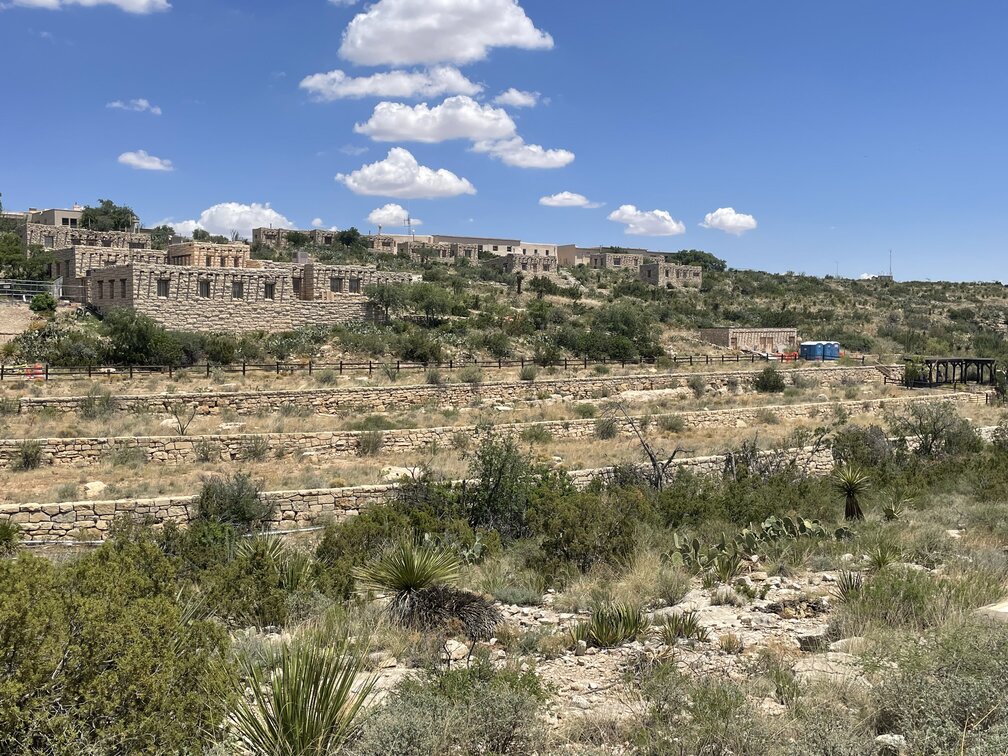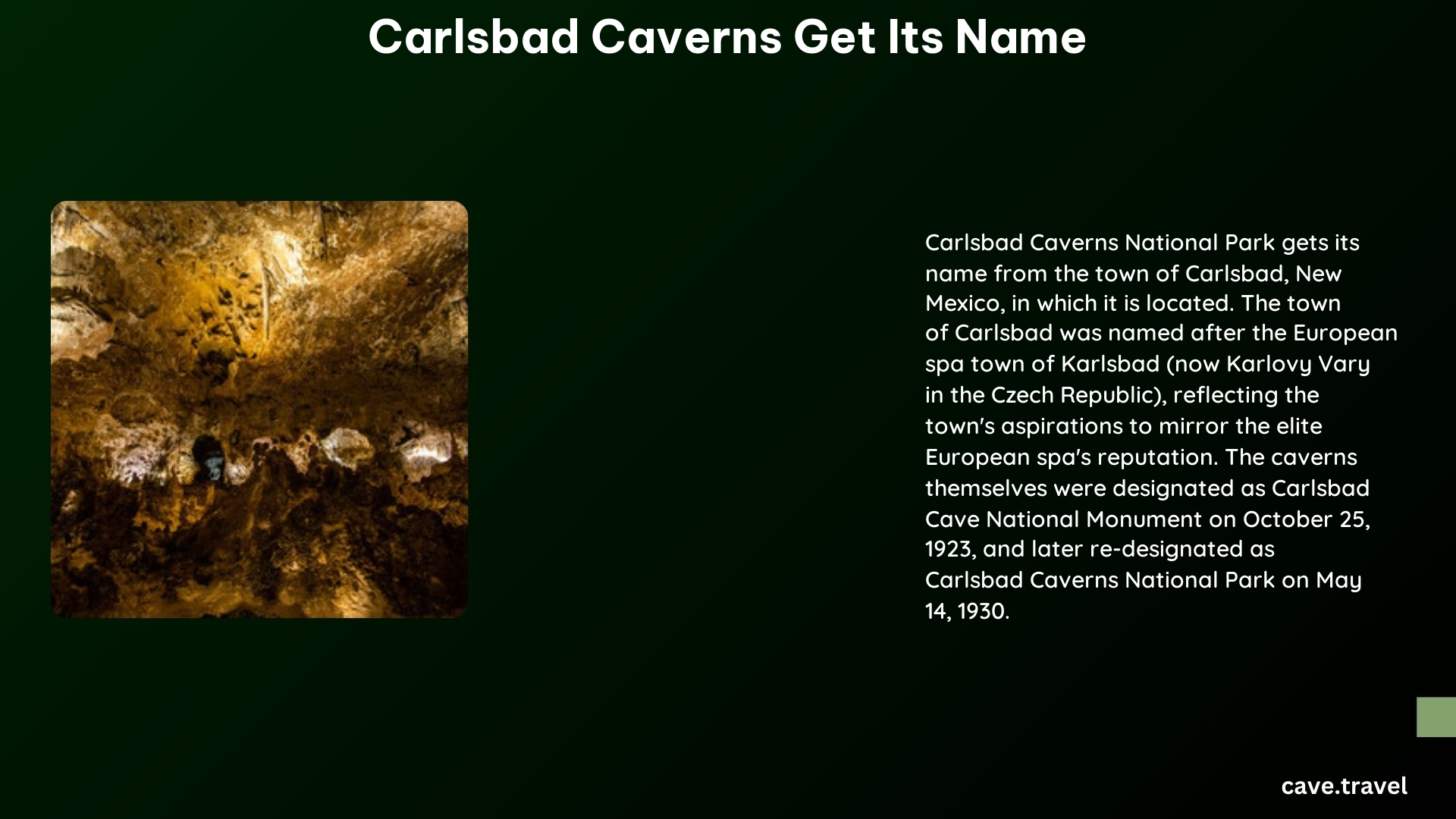Carlsbad Caverns, a renowned natural wonder in New Mexico, derives its name from a fascinating blend of historical, geographical, and cultural influences. The caverns’ naming is closely tied to the nearby city of Carlsbad, which itself has European roots. This article explores the origins of the Carlsbad Caverns name, tracing its etymology and the historical events that led to its official designation.
What Is the Origin of the “Carlsbad” Name?

The name “Carlsbad” has its roots in Europe, specifically in the German town of Karlsbad (now Karlovy Vary in the Czech Republic). This connection raises several questions:
Why Was a New Mexico City Named After a European Town?
- Mineral Springs Connection: The city of Carlsbad, New Mexico, was named after its European counterpart due to the presence of similar mineral springs in both locations.
- Cultural Influence: European settlers often named new settlements after familiar places from their homeland.
How Did the European Karlsbad Get Its Name?
- Etymology: “Karlsbad” translates to “Charles’ Bath” in English.
- Historical Figure: The town was named after Holy Roman Emperor Charles IV, who allegedly discovered the hot springs in the area during a hunting expedition in 1350.
When Was the Carlsbad Caverns Name Officially Adopted?

The official adoption of the Carlsbad Caverns name occurred in stages:
- 1898: James “Jim” Larkin White discovers and begins exploring the caverns.
- October 25, 1923: President Calvin Coolidge designates the site as “Carlsbad Cave National Monument.”
- 1930: Congress re-designates the site as “Carlsbad Caverns National Park.”
Why Were the Caverns Named After the City of Carlsbad?
Several factors contributed to naming the caverns after the nearby city:
- Geographical Proximity: The caverns are located close to the city of Carlsbad.
- Administrative Connection: The city served as a base for early exploration and development of the caverns.
- Regional Identity: Naming the caverns after the city helped establish a strong regional identity and connection.
Who Were the Key Figures in the Naming and Discovery of Carlsbad Caverns?
Several individuals played crucial roles in the discovery and naming of Carlsbad Caverns:
| Name | Role | Contribution |
|---|---|---|
| James “Jim” Larkin White | Explorer | Discovered and initially explored the caverns in 1898 |
| Calvin Coolidge | U.S. President | Designated the site as a National Monument in 1923 |
| Local Indigenous Peoples | Early Inhabitants | Aware of the caverns long before European exploration |
| Spanish Explorers | Early European Visitors | Passed through the area in the 1500s |
What Was the Historical Context Surrounding the Naming of Carlsbad Caverns?
The naming of Carlsbad Caverns occurred against a backdrop of:
- Indigenous History: Long-standing awareness and use of the area by Native American tribes.
- European Exploration: Spanish explorers’ presence in the region during the 16th century.
- American Westward Expansion: Increased settlement and exploration of the American Southwest.
- Conservation Movement: Growing national interest in preserving natural wonders.
How Has the Name “Carlsbad Caverns” Impacted Its Recognition?
The name “Carlsbad Caverns” has had significant impacts:
- National Recognition: Helped establish the site as a prominent national park.
- Tourism: Attracted visitors curious about the European-sounding name in the American Southwest.
- Scientific Interest: Sparked geological and speleological studies of the unique cave system.
- Cultural Significance: Became a point of pride for the local community and state of New Mexico.
What Are Some Interesting Facts About Carlsbad Caverns’ Naming History?
- The caverns were known to indigenous peoples long before their “official” discovery.
- The name “Carlsbad” traveled from Europe to New Mexico before being applied to the caverns.
- The site’s designation changed from a National Monument to a National Park within seven years.
- The naming reflects a blend of European, American, and indigenous influences.
In conclusion, the name “Carlsbad Caverns” encapsulates a rich tapestry of historical, cultural, and geographical elements. From its European etymological roots to its connection with local New Mexican history, the name reflects the complex interplay of influences that have shaped the American Southwest. The official adoption of this name in the early 20th century marked a significant milestone in recognizing and preserving one of nature’s most spectacular underground wonders.
References:
1. The History of Carlsbad Caverns National Park
2. History & Culture – Carlsbad Caverns National Park
3. Carlsbad – Wiktionary
